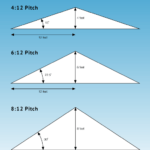
Making Your Own Garden Stepping Stones: A Beginner’s Guide
Gardening and landscaping are great ways to personalize your outdoor space and make it more inviting. One simple yet effective way to do this is by creating your own garden stepping stones. Not only is it an inexpensive and DIY-friendly project, but it also allows you to add a personal touch to your garden or yard.
Why Use Stepping Stones in Your Yard?
Garden stepping stones have several advantages as a material for building walkways. Here are a few reasons why you might consider using them:
* Inexpensive: Compared to other materials like brick or pavers, garden stepping stones are relatively cheap.
* Easy to make: With a few simple materials, you can create your own stepping stones at home.
* Customizable: By using different colors, patterns, and designs, you can make your stepping stones unique and personalized.
* Low maintenance: Garden stepping stones are easy to install and require minimal upkeep.
Uses for Garden Stepping Stones
In addition to their aesthetic potential, garden stepping stones also have practical uses throughout the yard. Here are a few examples:
* Unmulched planting beds: Stepping stones can help prevent dirt from being tracked into your home.
* Mulched planting beds: Stepping stones can also help prevent mulch particles from being tracked into your home, especially in wet weather.
* Lawn: Stepping stones can help absorb the pounding of foot traffic, saving your grass from compaction problems.
* Safety: Stepping stones can provide a safe and stable surface for walking, especially in areas with uneven terrain.
Safety Considerations When Working with Concrete
When working with concrete, there are a few safety considerations to keep in mind:
* Protective gear: Wear a long-sleeved shirt, long pants, protective eyewear, gloves, and a face mask when handling concrete.
* Proper lifting techniques: Keep a straight back, bend your knees, and cradle the load against your torso when lifting heavy concrete or materials.
* Avoid skin contact: Keep your skin protected from concrete and its caustic dust.
What You’ll Need to Make Garden Stepping Stones
Here’s a list of materials and tools you’ll need to make your own garden stepping stones:
* Equipment:
+ Molds (you can use commercial molds or make your own)
+ Wheelbarrow or tub
+ Shovel
+ Screed (a 2×4 board or similar)
+ Chickenwire fencing (optional)
+ Protective eyewear
+ Gloves
+ Face mask
+ Spade
+ Rubber mallet
* Materials:
+ Dry concrete mix
+ Water
+ Vaseline or cooking spray
+ Concrete coloring agent, patio paint, or decorations (optional)
+ Sand
Instructions for Making Garden Stepping Stones
Here’s a step-by-step guide to making your own garden stepping stones:
- Grease the molds: Use petroleum jelly or cooking spray to grease the inside of your molds.
- Mix the concrete: Pour dry concrete mix into a wheelbarrow or tub, and add a little water at a time. Mix until the concrete reaches a consistent, neither-too-dry-nor-too-wet consistency.
- Test the consistency: Use a shovel to test the consistency of the concrete. If it’s too dry, add more water. If it’s too wet, add more concrete.
- Pour the concrete into the molds: Pour the mixed concrete into the greased molds. Tamp it down as you go to remove air bubbles. Use a short 2×4 or similar to remove excess concrete from the top.
- Decorate the concrete (optional): Press decorative elements, such as mosaic pieces, sea glass, or handprints, into the concrete about 45 minutes after pouring.
- Let the concrete rest: Allow the concrete to rest for 2-3 days undisturbed.
- Flip the molds: Gently flip the molds upside down and tap all around to release the concrete stepping stones.
Installing Garden Stepping Stones
Here’s a step-by-step guide to installing your garden stepping stones:
- Test the layout: Space the concrete stepping stones to accommodate the average human stride (about 24 inches in the center).
- Mark the area for the stones: Jab a knife or spade through the grass, along the perimeter of where you want to lay the stepping stones.
- Remove the concrete stepping stones and excavate: Dig down 2 inches for a 2-inch thick concrete stepping stone.
- Add sand to the proper height: Add a 1/2-inch layer of sand at the bottom of the hole.
- Place the stones: Place the stepping stones over the sand and tamp them down gently with a mallet.
Frequently Asked Questions
Here are some common questions and answers about making and installing garden stepping stones:
* Is it more budget-friendly to buy or make stepping stones? Making your own stepping stones is significantly cheaper than buying premade and professional installation.
* What is the best concrete to use for DIY stepping stones? A general-purpose sand-mix concrete works best for stepping stones.
* Is it okay to lay stepping stones directly on top of the dirt? While possible, it’s better to set stepping stones over a bed of sand for drainage and settling.
Adding a Professional Touch to Your Stepping Stones
If you want to add a more professional touch to your stepping stones, consider the following tips:
* Use high-quality materials: Choose a durable concrete mix and sand for your stepping stones.
* Plan carefully: Measure and plan your stepping stone path carefully to ensure even spacing and a level surface.
* Take your time: Allow your stepping stones to rest for the recommended time to ensure they cure properly.
By following these tips and instructions, you can create your own beautiful and functional garden stepping stones that will enhance your outdoor space and provide a unique and personalized touch.
Frequently Asked Questions
Is it more budget-friendly to buy or make stepping stones? Making your own stepping stones is significantly cheaper than buying premade and professional installation.
What is the best concrete to use for DIY stepping stones? A general-purpose sand-mix concrete works best for stepping stones.
Is it okay to lay stepping stones directly on top of the dirt? While possible, it’s better to set stepping stones over a bed of sand for drainage and settling.














